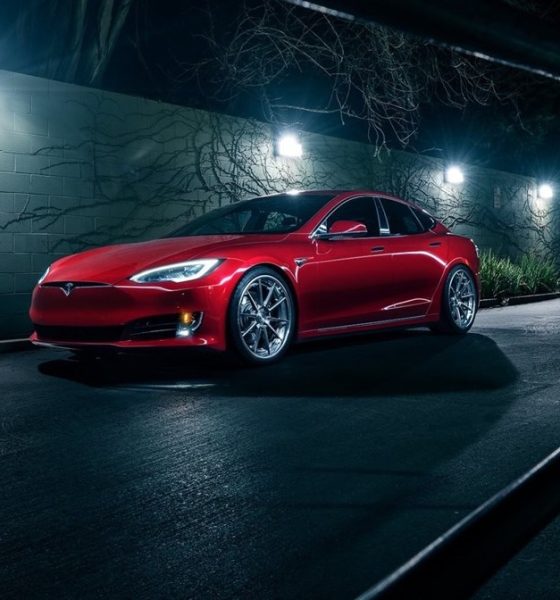When will that ‘light bulb moment’ happen with the car buying public? When will they pivot en masse from fossil fuel powered cars to electric vehicles? Australia’s chief scientist, Alan Finkel, owns two electric cars and says, “You just touch the accelerator and the car responds, whereas in a petrol car there is a lag of two tenths of a second… There is something magical about the responsiveness of it.” And it’s not just EV performance that’s so compelling.
Tesla CEO Elon Musk has said in the past, “If somebody said you’re gonna pour the liquid remains of dinosaurs into your vehicle and burn them in order to move from one place to another, releasing toxic fumes – and by the way, you better not have your car on in a closed room cause you’re gonna die – you’d say, ‘Why are we doing that?’ People drive basically parked in traffic with the air inlet [open] for their cabin right in front of the exhaust pipe of another car. It’s insane. You’re sucking up the toxic gas from the car in front of you.”
Finkel puts this all in historical perspective, he reminds us, “In the 1880s, the idea of electric street lights seemed absurd. If you had to light the streets, you did it with gas. Gas lamps were a fire hazard, smelled terrible and were barely an improvement on total darkness. Apart from that, they were fine… The problems were obvious, the potential was only visible to those with the courage to look.”
 |
Above: Before electric lights started to illuminate the world, the dominant form of lighting was gas lamps (Image: Eaton)
Finkel admits that early on, “gas-lamp defenders were right: the first generation electric lights were undeniably more expensive. The technology was untested at scale. Above all, it was unfamiliar. How could you picture a street lit up with 50 times the brilliance of the only lamps you had ever known? How could you project ahead to the night-time economy – the world of cinemas and bars, of night-time shopping and safe city transport, made possible by cheap and abundant electric light?”
As EV battery costs plummet, there are similar parallels to be drawn with today’s auto industry. Finkel notes, “I think of the gas lamp when I hear arguments against electric cars… [and] let’s look at lifestyle and convenience. Imagine if you couldn’t charge your smartphone at home – if you had to schedule time in your day to ‘fill up’ at a public charger. You’d be outraged. So what’s so bad about a car you never have to take to a petrol station? It’s convenient!”
Perhaps Finkel is onto something. Once cars like the Tesla Model 3, Chevy Bolt, and Nissan Leaf begin to hit the mainstream, the car buying public might (finally) envision a brighter future. As these cars move beyond the early adopters, electric cars will boast inherent advantages that will (in retrospect) seem obvious to the masses — zero dirty tailpipe emissions, addictive on-demand torque, and a “gas station” (ahem, charger) in your own garage. Soon, the dark days of dinosaur-juice cars could come to a close… it’s time to turn on the lights.
===
Note: Article originally published on evannex.com, by Matt Pressman

News
Tesla FSD fleet is nearing 7 billion total miles, including 2.5 billion city miles
As can be seen on Tesla’s official FSD webpage, vehicles equipped with the system have now navigated over 6.99 billion miles.

Tesla’s Full Self-Driving (Supervised) fleet is closing in on almost 7 billion total miles driven, as per data posted by the company on its official FSD webpage.
These figures hint at the massive scale of data fueling Tesla’s rapid FSD improvements, which have been quite notable as of late.
FSD mileage milestones
As can be seen on Tesla’s official FSD webpage, vehicles equipped with the system have now navigated over 6.99 billion miles. Tesla owner and avid FSD tester Whole Mars Catalog also shared a screenshot indicating that from the nearly 7 billion miles traveled by the FSD fleet, more than 2.5 billion miles were driven inside cities.
City miles are particularly valuable for complex urban scenarios like unprotected turns, pedestrian interactions, and traffic lights. This is also the difference-maker for FSD, as only complex solutions, such as Waymo’s self-driving taxis, operate similarly on inner-city streets. And even then, incidents such as the San Francisco blackouts have proven challenging for sensor-rich vehicles like Waymos.
Tesla’s data edge
Tesla has a number of advantages in the autonomous vehicle sector, one of which is the size of its fleet and the number of vehicles training FSD on real-world roads. Tesla’s nearly 7 billion FSD miles then allow the company to roll out updates that make its vehicles behave like they are being driven by experienced drivers, even if they are operating on their own.
So notable are Tesla’s improvements to FSD that NVIDIA Director of Robotics Jim Fan, after experiencing FSD v14, noted that the system is the first AI that passes what he described as a “Physical Turing Test.”
“Despite knowing exactly how robot learning works, I still find it magical watching the steering wheel turn by itself. First it feels surreal, next it becomes routine. Then, like the smartphone, taking it away actively hurts. This is how humanity gets rewired and glued to god-like technologies,” Fan wrote in a post on X.
News
Tesla starts showing how FSD will change lives in Europe
Local officials tested the system on narrow country roads and were impressed by FSD’s smooth, human-like driving, with some calling the service a game-changer for everyday life in areas that are far from urban centers.

Tesla has launched Europe’s first public shuttle service using Full Self-Driving (Supervised) in the rural Eifelkreis Bitburg-Prüm region of Germany, demonstrating how the technology can restore independence and mobility for people who struggle with limited transport options.
Local officials tested the system on narrow country roads and were impressed by FSD’s smooth, human-like driving, with some calling the service a game-changer for everyday life in areas that are far from urban centers.
Officials see real impact on rural residents
Arzfeld Mayor Johannes Kuhl and District Administrator Andreas Kruppert personally tested the Tesla shuttle service. This allowed them to see just how well FSD navigated winding lanes and rural roads confidently. Kruppert said, “Autonomous driving sounds like science fiction to many, but we simply see here that it works totally well in rural regions too.” Kuhl, for his part, also noted that FSD “feels like a very experienced driver.”
The pilot complements the area’s “Citizen Bus” program, which provides on-demand rides for elderly residents who can no longer drive themselves. Tesla Europe shared a video of a demonstration of the service, highlighting how FSD gives people their freedom back, even in places where public transport is not as prevalent.
What the Ministry for Economic Affairs and Transport says
Rhineland-Palatinate’s Minister Daniela Schmitt supported the project, praising the collaboration that made this “first of its kind in Europe” possible. As per the ministry, the rural rollout for the service shows FSD’s potential beyond major cities, and it delivers tangible benefits like grocery runs, doctor visits, and social connections for isolated residents.
“Reliable and flexible mobility is especially vital in rural areas. With the launch of a shuttle service using self-driving vehicles (FSD supervised) by Tesla in the Eifelkreis Bitburg-Prüm, an innovative pilot project is now getting underway that complements local community bus services. It is the first project of its kind in Europe.
“The result is a real gain for rural mobility: greater accessibility, more flexibility and tangible benefits for everyday life. A strong signal for innovation, cooperation and future-oriented mobility beyond urban centers,” the ministry wrote in a LinkedIn post.
News
Tesla China quietly posts Robotaxi-related job listing
Tesla China is currently seeking a Low Voltage Electrical Engineer to work on circuit board design for the company’s autonomous vehicles.

Tesla has posted a new job listing in Shanghai explicitly tied to its Robotaxi program, fueling speculation that the company is preparing to launch its dedicated autonomous ride-hailing service in China.
As noted in the listing, Tesla China is currently seeking a Low Voltage Electrical Engineer to work on circuit board design for the company’s autonomous vehicles.
Robotaxi-specific role
The listing, which was shared on social media platform X by industry watcher @tslaming, suggested that Tesla China is looking to fill the role urgently. The job listing itself specifically mentions that the person hired for the role will be working on the Low Voltage Hardware team, which would design the circuit boards that would serve as the nervous system of the Robotaxi.
Key tasks for the role, as indicated in the job listing, include collaboration with PCB layout, firmware, mechanical, program management, and validation teams, among other responsibilities. The role is based in Shanghai.
China Robotaxi launch
China represents a massive potential market for robotaxis, with its dense urban centers and supportive policies in select cities. Tesla has limited permission to roll out FSD in the country, though despite this, its vehicles have been hailed as among the best in the market when it comes to autonomous features. So far, at least, it appears that China supports Tesla’s FSD and Robotaxi rollout.
This was hinted at in November, when Tesla brought the Cybercab to the 8th China International Import Expo (CIIE) in Shanghai, marking the first time that the autonomous two-seater was brought to the Asia-Pacific region. The vehicle, despite not having a release date in China, received a significant amount of interest among the event’s attendees.










